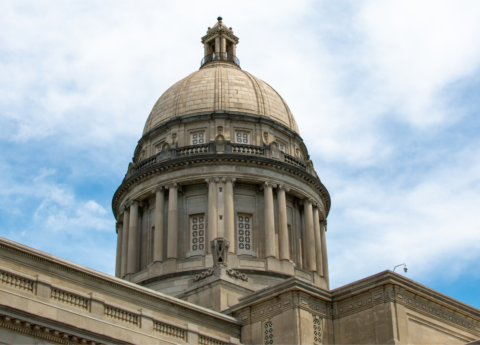The budget the Senate passed on Thursday would not use any of the $122 million sitting in the state’s rainy day fund to help reduce cuts to essential services. In fact, the budget would put even more money in the fund, boosting it to $128 million.
That is a mistake—one that lawmakers should correct as the Senate negotiates a final budget with the House, which proposed using nearly $100 million of rainy day money in order to mitigate cuts.
Rainy day funds are cash reserves designed to be used when times are bad and grown when times are good. Currently, times are quite bad: the General Assembly is dealing with the worst gap between the state’s needs and the resources it takes to meet them since the recession hit in 2007.
In order to balance the budget, the legislature is proposing cuts of up to 8.4 percent to services for Kentucky children, seniors and working families. That is on top of 10 rounds of other cuts over the past few years, which have reduced funding for many of the basic services Kentuckians rely on by 20 to 30 percent.
The deeper the cuts in education, health care and other investments that help individuals and families thrive, the greater the harm to Kentucky’s economy and its ability to generate jobs. It would be wise to minimize those cuts by drawing down the rainy day fund, among other strategies, just as intended when the fund was created in 1989.
While the fragile economic recovery has led to slight increases in state revenues, they are nowhere near what we need. In the past few years, the state’s weak tax receipts were partially offset by $3 billion in federal Recovery Act money. Those dollars helped keep teachers in the classroom and police on the roads, but no additional federal help is on the way.
Unemployment is still high, which means more people need Medicaid and other lifelines for struggling families. These needs will gradually decline as the economy improves, but at current rates of growth that won’t occur for several years.
The desire of some lawmakers to lock up the rainy day fund seems to be driven by incorrect notions of fiscal responsibility. They fear that investors in state bonds will be spooked if the reserve funds are used, leading to higher borrowing costs.
But credit rating agencies that assess borrowing risks for investors will not ding Kentucky for dipping into its rainy day fund—they expect that money to be used. A Standard & Poor’s report released after the 2001 recession stated that “it is important to keep in mind that use of budget stabilization reserves is not a credit weakness in and of itself. The reserves are clearly in place to be used.”1 In fact, seven of the 10 states with AAA bond ratings (the highest rate) used one-third or more of their rainy day funds to cope with that earlier recession, according to a University of Tennessee study. Three of those states had used their entire rainy day funds.2
The current balance of Kentucky’s rainy day fund is accidental rather than the result of prior savings. Revenue forecasts always include some margin for error, and in 2011 revenues came in higher than the estimate leading to a $122 million deposit into the fund.
Kentucky’s problems are rooted in the combination of an outmoded tax system no longer adequate for the state’s needs and an economy that is still a long way from full recovery. We need to address this challenge in a way that limits the economic pain. If legislators are unwilling this session to balance spending cuts that threaten the state’s future with needed tax reforms, they should at least use the rainy day fund to temper some cuts to vitally needed services.



